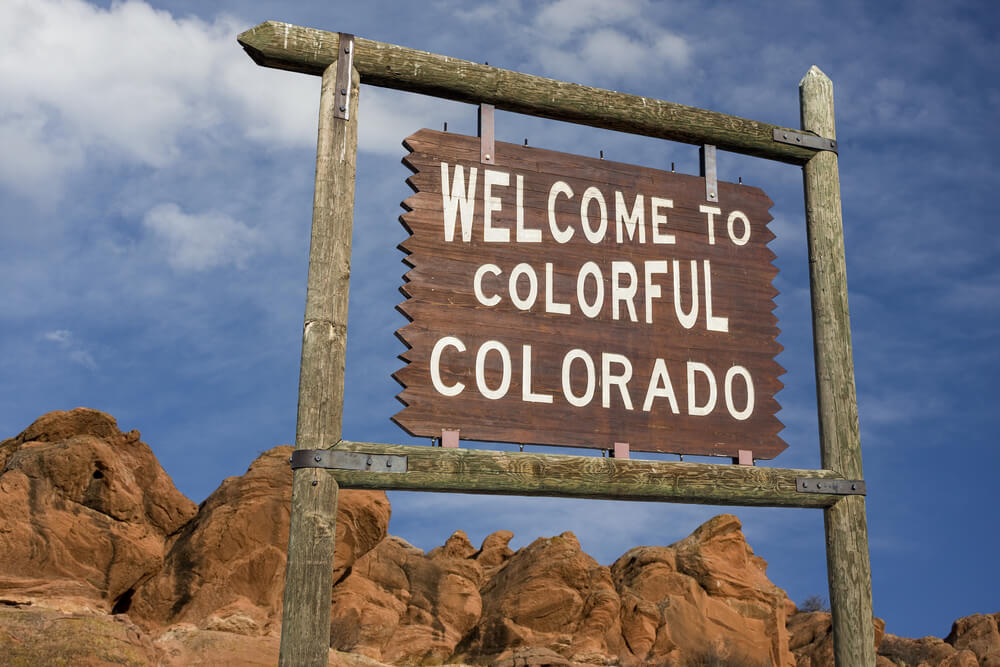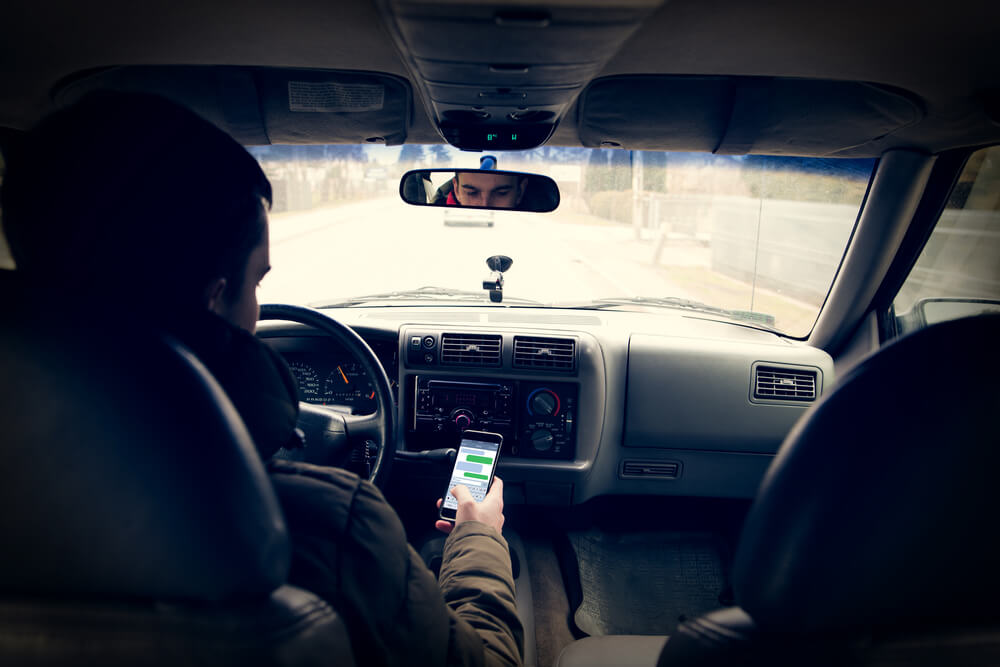victims for over 25 years.
Attention New Colorado Residents! Here Are Some Colorado Road Laws that You May Not Know

Colorado is a hot destination! Not only for tourists all year long, but for new residents looking to enjoy our healthy lifestyle, consistent sunshine, glorious mountains, and bustling economy. If you are among Colorado’s newest residents, welcome to you!
You are probably acclimating yourself to all kinds of unique Colorado traditions and habits. As part of that, you should learn our rules of the road. Colorado has some laws that outsiders might find odd or confusing.
So, I thought I’d write a primer on some of the fundamental Colorado road laws that you might not know.
Colorado’s Roads are Dangerous

First, allow me to share some bad news. The roads in Colorado can be dangerous. There were 745 deaths on the roads in 2022, making it the deadliest since 1981. Anecdotally, those of us who have lived here a long time attribute this tragic truth to…well…an influx of people, which means more cars on the road.
People have become frustrated drivers, running red lights more often than they used to, speeding through neighborhoods, and cutting pedestrians and bikers off to make a turn.
But that’s just my observation from my personal injury office at 6th and Ogden. Experts and data crunchers have stats to prove that there are additional causes contributing to these deadly statistics. They have found:
- Impaired driving deaths increased to 278 last year, up 6% from 2021 and up 60% since 2019.
- Seat belt use in Colorado remains stagnant at 87%, lagging behind the national average of 90%. The majority of those killed in crashes were unbuckled.
- Of the people killed in 2022, 36% were pedestrians, motorcyclists and bicyclists. Last year saw 147 motorcyclists and 109 pedestrians killed, the most since 1975.
Major efforts are underway to reverse these trends. For example, Denver’s Vision Zero program aims to reduce traffic deaths to zero, though it is proving to be a difficult goal to achieve. The city also recently passed a law reducing neighborhood speed limits from 25 mph to 20 mph.
Now that you know some of the important challenges that Colorado drivers, pedestrians, motorcyclists and bicyclists face, the following Colorado road laws will likely make more sense.
Bike Lanes in Colorado
As you embark on your journey through the beautiful neighborhoods of Colorado, you’ll notice that some roads have designated bike lanes. These lanes are reserved for cyclists, offering them a safe space to pedal along without worrying about sharing the road with cars. It’s essential to respect these lanes and avoid parking or driving in them to prevent accidents and to create a harmonious coexistence for all road users.
Colorado Crosswalks
Speaking of neighborhoods, Colorado has a law that requires motorists to yield to pedestrians at crosswalks. The colorful streets of Denver, Boulder, and other cities are adorned with numerous crosswalks, providing pedestrians with a safe passage. Remember, as a driver, it is your responsibility to stop and yield to pedestrians patiently, allowing them to cross safely. A little courtesy goes a long way in fostering a pedestrian-friendly environment.
Seat Belt Laws in Colorado
Venturing beyond the neighborhoods, you’ll encounter the bustling thoroughfares and highways that connect the state. In Colorado, it is mandatory for all passengers to wear seat belts while traveling in a vehicle. Whether you’re driving on the picturesque Highway 285 or cruising along the fast-paced I-70, fastening your seat belt is not just a legal requirement, but a crucial step in safeguarding your life.
Slow Down, Move Over Law in Colorado
In August 2023, Colorado will join nine other states that enforce the so-called, “Slow Down, Move Over” law. Simply put, if you see a vehicle on the side of the road, you must slow down and move over. This has always been the courteous thing to do, but as of August, it will be the law.
Don’t Text and Drive in Colorado

One law that holds particular significance in Colorado is the prohibition of texting while driving. The allure of the stunning views might tempt you to take a quick snapshot or respond to a message, but it is vital to resist this temptation. Distracted driving contributes to a significant number of accidents on Colorado’s roads. By focusing solely on the task at hand and keeping your eyes on the road, you can help reduce the number of accidents and ensure everyone’s safety.
Here are the specific laws around cell phone use while driving in Colorado:
Adult drivers. Colorado law permits regular cell phone use for voice calls. Headphones may be worn in one ear for this purpose. However, adult drivers are prohibited from manual data entry and transmission on a cell phone (i.e., to send a text message or browse the internet) while behind the wheel.
Minor drivers. Any driver under 18 years of age is prohibited from using a cell phone while driving. The prohibition includes phone calls, text messaging, or similar forms of manual data entry and transmission.
Exceptions. Exceptions to the law are provided under specified circumstances. Drivers, regardless of age, may use a wireless device for phone calls or sending or receiving text messages either to contact a public safety entity or during an emergency. An emergency is defined as any situation in which the following may occur:
- a person has reason to fear for his or her life or safety, or believes that a criminal act may be perpetrated against him or her or against another person;
- reporting of a fire, serious traffic accident, serious road hazard, or a medical or hazardous materials emergency; or
- reporting of a person who is driving in a reckless, careless, or unsafe manner.
Be Cautious on Colorado’s Narrow Mountain Roadways
Many of the backroads in our mountains are narrow, allowing only one car to pass. Therefore, we have laws directing how drivers handle the awkward situation when two cars end up facing each other on these skinny roads.
When this happens, the vehicle going downhill must yield the right-of-way to the vehicle going uphill. (In some very steep situations, the car going uphill may not be able to regain its momentum if it is forced to stop! Let that car keep climbing and then head on down the hill yourself.)
Unpredictable Colorado Weather Requires Vigilance
Colorado weather is extremely unpredictable, especially the higher in elevation that you travel. Storms can move in quickly, turning a beautiful, sun-kissed day into a roiling, wet, cold tempest.
If you’re not used to our state’s mountain passes and roadside cliffs, it’s extremely important that you check the weather before heading into the hills.
If you get nervous or feel vulnerable during changing weather conditions, simply pull over for a while and calm down. As the saying goes, “Don’t like the weather in Colorado? Wait 15 minutes.”
Colorado’s roads are a gateway to unforgettable experiences, but it is our collective responsibility to make sure they remain a safe haven for all who traverse them.
Free Consultation
Search For
Recent Articles
Categories
- Arvada
- Aurora
- Auto Accident eBook
- Auto Insurance
- Bicycle
- Bicycle/Motorcycle Accidents
- Bodily injury
- Car accidents
- Centennial
- Colorado
- Colorado Legislature
- community
- Denver
- Denver Metro Motor Vehicle Accidents
- distracted driving
- DUI Accidents
- Englewood
- Events
- Flood Insurance
- Fort Collins
- Highlands Ranch
- Hit and Run
- In The News
- insurance companies
- Lakewood
- Littleton
- Marijuana DUI
- Motorcycle Accidents
- Motorcycle Insurance
- Motorcycle Law eBook
- Motorcycles
- Newsletter
- Pedestrian
- Personal Injury Law
- Press Release
- Safe Driving
- Safety
- Scooters
- technology
- Tips
- Uncategorized
- vibrio vulnificus bacteria
- Videos
- Westminster
- Winter Driving
- Wrongful Death
Archive
- November 2025
- October 2025
- September 2025
- August 2025
- July 2025
- June 2025
- May 2025
- April 2025
- March 2025
- February 2025
- January 2025
- December 2024
- November 2024
- October 2024
- September 2024
- August 2024
- July 2024
- May 2024
- April 2024
- March 2024
- February 2024
- January 2024
- December 2023
- November 2023
- October 2023
- September 2023
- August 2023
- July 2023
- June 2023
- May 2023
- April 2023
- March 2023
- February 2023
- January 2023
- November 2022
- September 2022
- April 2022
- March 2022
- February 2022
- January 2022
- December 2021
- November 2021
- October 2021
- September 2021
- August 2021
- July 2021
- June 2021
- May 2021
- April 2021
- January 2021
- December 2020
- November 2020
- October 2020
- September 2020
- August 2020
- July 2020
- June 2020
- May 2020
- April 2020
- March 2020
- February 2020
- January 2020
- December 2019
- November 2019
- October 2019
- September 2019
- August 2019
- July 2019
- June 2019
- May 2019
- March 2019
- February 2019
- January 2019
- December 2018
- November 2018
- October 2018
- September 2018
- August 2018
- July 2018
- June 2018
- May 2018
- April 2018
- March 2018
- February 2018
- January 2018
- December 2017
- November 2017
- October 2017
- September 2017
- August 2017
- July 2017
- June 2017
- May 2017
- April 2017
- March 2017
- February 2017
- January 2017
- December 2016
- November 2016
- October 2016
- September 2016
- August 2016
- July 2016
- June 2016
- May 2016
- April 2016
- March 2016
- February 2016
- January 2016
- December 2015
- November 2015
- October 2015
- September 2015
- August 2015
- July 2015
- June 2015
- May 2015
- April 2015
- February 2015
- November 2014
- October 2014
- September 2014
- July 2014
- June 2014
- May 2014
- April 2014
- March 2014
- February 2014
- January 2014
- October 2012
- September 2012
- August 2012
- July 2012
- February 2012
- March 2011
- October 2010